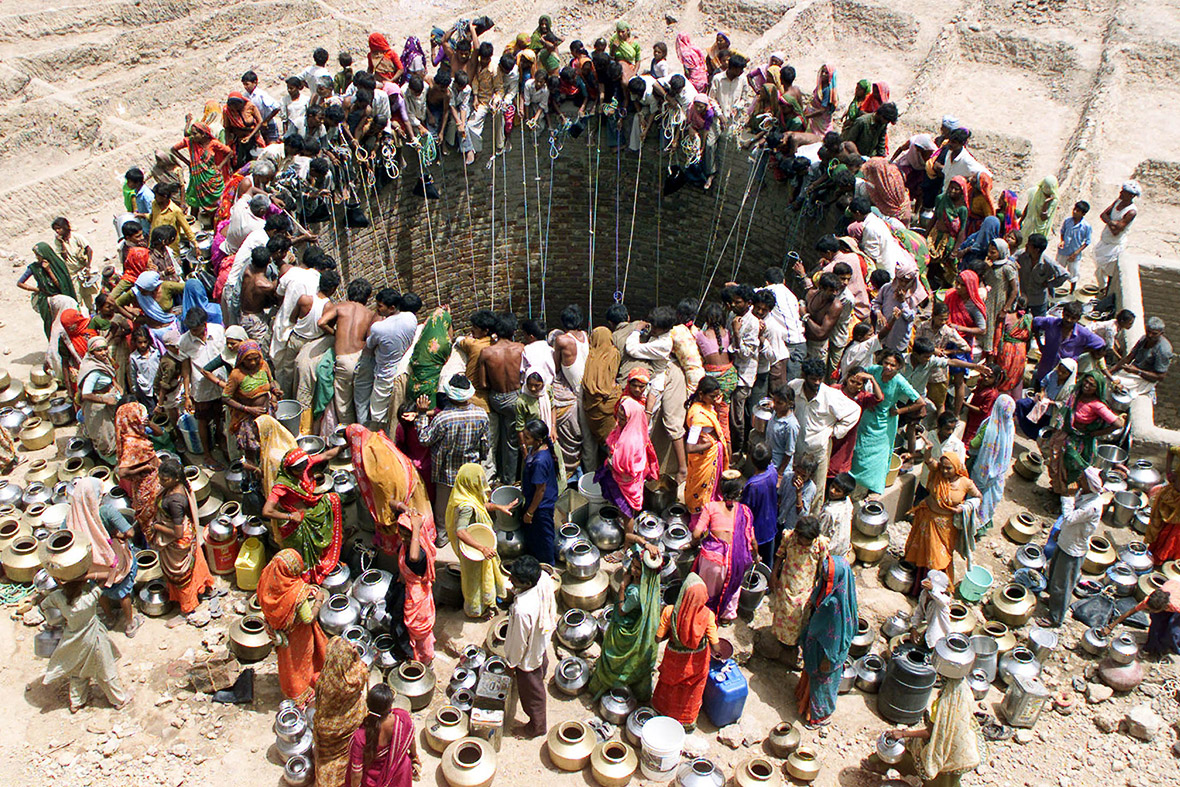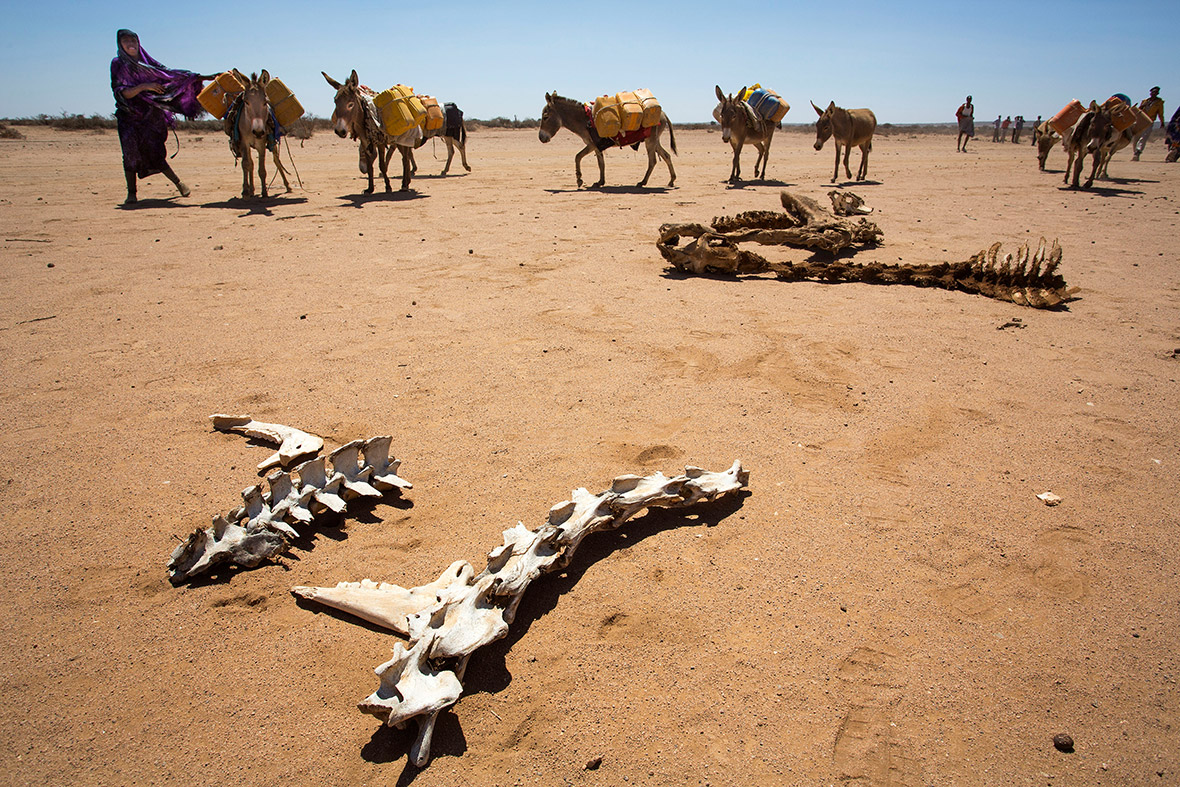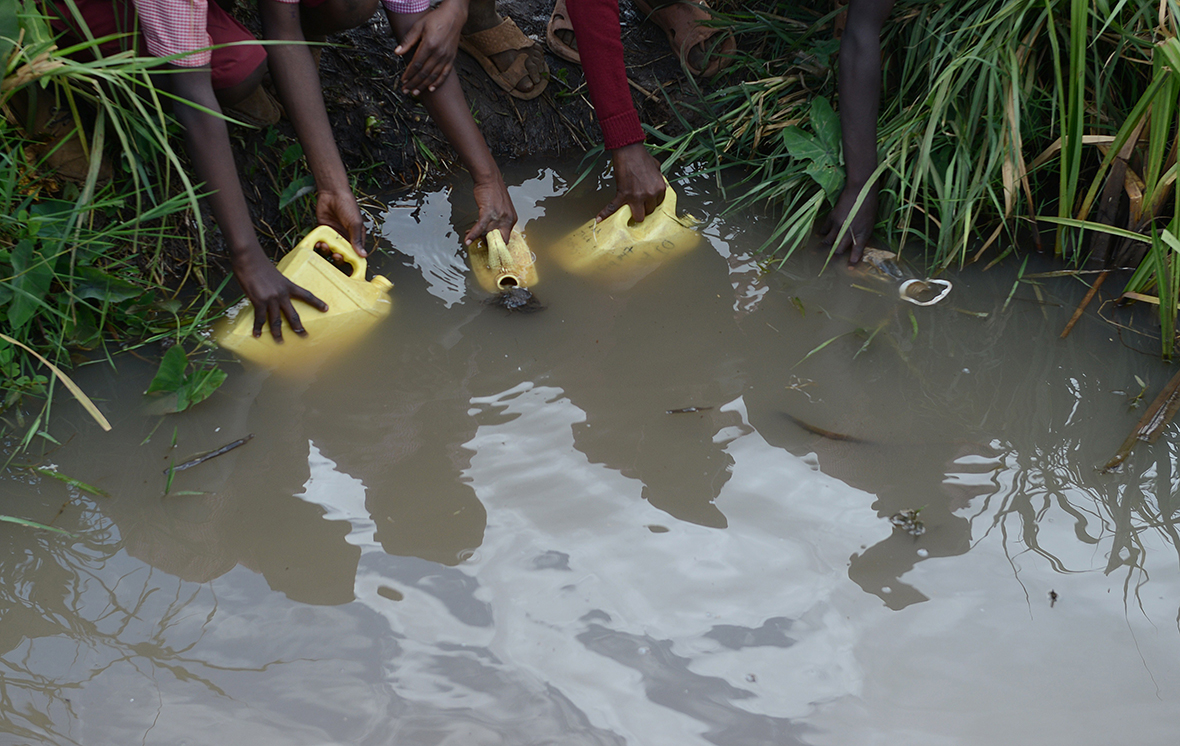Water Day 2017
Enlarge this image Click to see fullsize

By David Sim
Water Day 2017: 60 powerful photos to make you think twice about leaving the tap running
More than 650 million people, or 10% of the world’s population, do not have access to safe water, putting them at risk of infectious diseases and premature deatth.
World Water Day is marked on 22 March every year to raise awareness of the water crisis facing much of the world’s population. The UN estimates that more than 663 million people do not have a safe water supply close to home. Instead of turning on a tap, they must spend countless hours queueing or trekking to sources of water. This water is often contaminated, putting people at risk of infectious diseases and premature death.
Enlarge this image Click to see fullsize
 People gather to fetch water from a huge well in the village of Natwarghad in the western Indian state of GujaratReuters
People gather to fetch water from a huge well in the village of Natwarghad in the western Indian state of GujaratReuters
Dirty water and poor sanitation can cause severe diseases in children, killing 900 under-fives every day across the world, according to United Nations estimates – or one child every two minutes. Among newborn babies, the World Health Organisation says infections caused by a lack of safe water and an unclean environment cause one death every minute somewhere in the world.
The theme of World Water 2017 is “Why waste water?” The vast majority of wastewater from homes, cities, industry and agriculture around the world flows back to nature without being treated or reused – polluting the environment, and losing valuable nutrients and other recoverable materials. WWD2017 aims to promote the need for reducing and reusing wastewater for things like irrigation and cooling.
To mark World Water Day 2017, IBTimes UKpresents 60 powerful photos to remind us that one in ten people don’t have access to clean, safe water.
Enlarge this image Click to see fullsize
 A woman leads her donkeys loaded with jerrycans past the carcass of a domestic animal that died due to severe drought in Baligubadle village near Hargeisa, SomalilandRed Cross/Reuters
A woman leads her donkeys loaded with jerrycans past the carcass of a domestic animal that died due to severe drought in Baligubadle village near Hargeisa, SomalilandRed Cross/Reuters
Enlarge this image Click to see fullsize
 A woman fetches drinking water from a well along the dried-up Chemumvuri river near Gokwe, ZimbabweReuters
A woman fetches drinking water from a well along the dried-up Chemumvuri river near Gokwe, ZimbabweReuters
Enlarge this image Click to see fullsize
 Residents collect drinking water from a lake in Dala township, near Yangon, MyanmarAFP
Residents collect drinking water from a lake in Dala township, near Yangon, MyanmarAFP
Enlarge this image Click to see fullsize
 Children collect water from a swamp in Mwea, KenyaAFP
Children collect water from a swamp in Mwea, KenyaAFP
Enlarge this image Click to see fullsize
 People collect water from a muddy waterhole in San Marcos Tlacoyalco, MexicoGetty Images
People collect water from a muddy waterhole in San Marcos Tlacoyalco, MexicoGetty Images
Enlarge this image Click to see fullsize
 A slum dweller keeps an eye open fro trains as she collects water for drinking from a puddle in between railway tracks in MumbaiReuters
A slum dweller keeps an eye open fro trains as she collects water for drinking from a puddle in between railway tracks in MumbaiReuters
Enlarge this image Click to see fullsize
 Slum dwellers collect drinking water from a submerged hand-pump after heavy rains in the northern Indian city of AllahabadReuters
Slum dwellers collect drinking water from a submerged hand-pump after heavy rains in the northern Indian city of AllahabadReuters
VIEW MORE HERE: http://www.jbbardot.com/powerful-leaving-running/?utm_source=feedburner&utm_medium=email&utm_campaign=Feed%3A+TheJBBardotArchives+%28The+JB+Bardot+Archives%29
Thanks to: http://www.jbbardot.com

By David Sim
Water Day 2017: 60 powerful photos to make you think twice about leaving the tap running
More than 650 million people, or 10% of the world’s population, do not have access to safe water, putting them at risk of infectious diseases and premature deatth.
World Water Day is marked on 22 March every year to raise awareness of the water crisis facing much of the world’s population. The UN estimates that more than 663 million people do not have a safe water supply close to home. Instead of turning on a tap, they must spend countless hours queueing or trekking to sources of water. This water is often contaminated, putting people at risk of infectious diseases and premature death.
Enlarge this image Click to see fullsize
 People gather to fetch water from a huge well in the village of Natwarghad in the western Indian state of GujaratReuters
People gather to fetch water from a huge well in the village of Natwarghad in the western Indian state of GujaratReutersDirty water and poor sanitation can cause severe diseases in children, killing 900 under-fives every day across the world, according to United Nations estimates – or one child every two minutes. Among newborn babies, the World Health Organisation says infections caused by a lack of safe water and an unclean environment cause one death every minute somewhere in the world.
The theme of World Water 2017 is “Why waste water?” The vast majority of wastewater from homes, cities, industry and agriculture around the world flows back to nature without being treated or reused – polluting the environment, and losing valuable nutrients and other recoverable materials. WWD2017 aims to promote the need for reducing and reusing wastewater for things like irrigation and cooling.
To mark World Water Day 2017, IBTimes UKpresents 60 powerful photos to remind us that one in ten people don’t have access to clean, safe water.
Enlarge this image Click to see fullsize
 A woman leads her donkeys loaded with jerrycans past the carcass of a domestic animal that died due to severe drought in Baligubadle village near Hargeisa, SomalilandRed Cross/Reuters
A woman leads her donkeys loaded with jerrycans past the carcass of a domestic animal that died due to severe drought in Baligubadle village near Hargeisa, SomalilandRed Cross/Reuters Enlarge this image Click to see fullsize
 A woman fetches drinking water from a well along the dried-up Chemumvuri river near Gokwe, ZimbabweReuters
A woman fetches drinking water from a well along the dried-up Chemumvuri river near Gokwe, ZimbabweReuters Enlarge this image Click to see fullsize
 Residents collect drinking water from a lake in Dala township, near Yangon, MyanmarAFP
Residents collect drinking water from a lake in Dala township, near Yangon, MyanmarAFP Enlarge this image Click to see fullsize
 Children collect water from a swamp in Mwea, KenyaAFP
Children collect water from a swamp in Mwea, KenyaAFP Enlarge this image Click to see fullsize
 People collect water from a muddy waterhole in San Marcos Tlacoyalco, MexicoGetty Images
People collect water from a muddy waterhole in San Marcos Tlacoyalco, MexicoGetty Images Enlarge this image Click to see fullsize
 A slum dweller keeps an eye open fro trains as she collects water for drinking from a puddle in between railway tracks in MumbaiReuters
A slum dweller keeps an eye open fro trains as she collects water for drinking from a puddle in between railway tracks in MumbaiReuters Enlarge this image Click to see fullsize
 Slum dwellers collect drinking water from a submerged hand-pump after heavy rains in the northern Indian city of AllahabadReuters
Slum dwellers collect drinking water from a submerged hand-pump after heavy rains in the northern Indian city of AllahabadReuters VIEW MORE HERE: http://www.jbbardot.com/powerful-leaving-running/?utm_source=feedburner&utm_medium=email&utm_campaign=Feed%3A+TheJBBardotArchives+%28The+JB+Bardot+Archives%29
Thanks to: http://www.jbbardot.com



Comments
Post a Comment